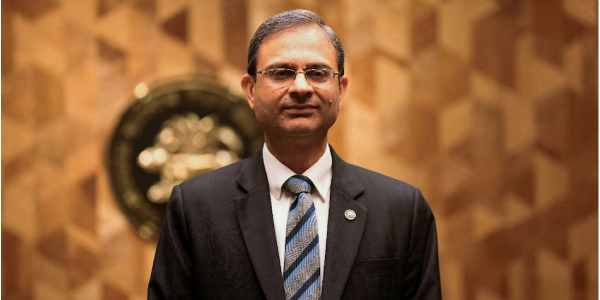
According to SBI Research’s Ecowrap report, this staggered CRR cut is expected to release Rs 2.5 lakh crore of primary liquidity into the banking system by the end of 2025.
In a bold move to reinforce liquidity and credit growth, the Reserve Bank of India (RBI) has announced a 100 basis point (bps) cut in the Cash Reserve Ratio (CRR), to be implemented in a phased manner starting September 6, 2025.
According to SBI Research’s Ecowrap report, this staggered CRR cut is expected to release Rs 2.5 lakh crore of primary liquidity into the banking system by the end of 2025. The cut will roll out in four tranches of 25 bps each on September 6, October 4, November 1, and November 29, effectively bringing the CRR down from 4% to 3%—a level last seen in March 2020, before the pandemic began.
Advertisement
This infusion of durable liquidity is expected to ease funding pressures on banks, lower the cost of funds, and aid in more efficient transmission of monetary policy into the credit markets.
While the CRR reduction may not mathematically change deposit or lending rates, it is likely to enhance the money multiplier by 20–30 bps and provide a 3–5 bps cushion to banks’ net interest margins (NIMs). This is particularly significant in a declining rate environment, where banks often struggle to maintain spreads between lending and deposit rates.
The CRR cut complements the RBI’s earlier moves this year, which included two repo rate reductions of 25 bps each in February and April 2025, followed by a surprise 50 bps cut in June, bringing the repo rate to 5.5%. This takes the cumulative rate cut for the year to 100 bps, marking one of the most aggressive easing cycles in recent times.
Advertisement
Transmission of policy rates has been strong, particularly due to the growing share of loans linked to the External Benchmark Lending Rate (EBLR), which now covers around 60.2% of total loans. These loans respond almost immediately to repo rate changes. In contrast, 35.9% of loans are still linked to the Marginal Cost of Funds Based Lending Rate (MCLR), where rate adjustments occur more gradually due to longer reset periods.
The transmission has also started impacting the deposit side, with banks having reduced fixed deposit (FD) rates by 30–70 bps since February 2025. Further reductions are expected in the coming quarters as banks adjust to lower funding costs and reprice term liabilities. Some banks have already begun tweaking savings account interest rates to protect margins as loan yields decline faster than deposit costs.
Advertisement
SBI Research's Variance Decomposition Analysis (VAR model) demonstrated that over 52% of the variance in loan rates after 12 months can be explained by repo rate shocks. This underscores the strong and persistent transmission of monetary policy to the real economy. Initially, the pass-through is muted, with only 9% of loan rate variance explained by repo rate changes in the first month. However, the impact becomes more pronounced over time.
The report noted that RBI’s twin strategy—cutting both the repo rate and CRR—shows a clear intent to stimulate credit demand, support economic recovery, and maintain financial stability. With CPI inflation projected to average 3.7% in FY26, and GDP growth forecast at 6.5%, the RBI has also shifted its policy stance from accommodative to neutral, signalling a more cautious approach going forward amid narrowing policy headroom.


